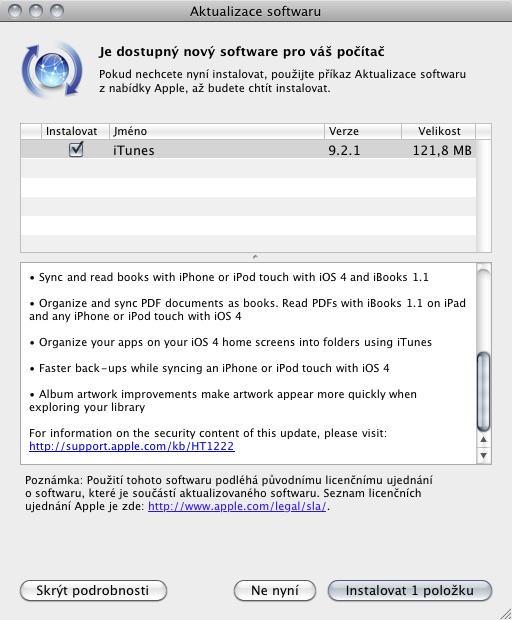36 languages., , and for code and for documentation Website Audacity is a and recording, available for, and operating systems. Audacity was started in the fall of 1999 by Dominic Mazzoni and Roger Dannenberg at and was released on May 28, 2000 as version 0.8. As of October 10, 2011, it was the 11th most popular download from, with 76.5 million downloads. Audacity won the SourceForge 2007 and 2009 Community Choice Award for Best Project for Multimedia. In March 2015 hosting was moved to and by September, 2018 it had exceeded 62.5 million downloads there. Audacity's main panel annotated.
All the components that have been labelled are custom for Audacity. In addition to recording audio from multiple sources, Audacity can be used for post-processing of all types of audio, including by adding effects such as normalization, trimming, and fading in and out. Audacity has also been used to record and mix entire albums, such as. It is also currently used in the UK National Level 2 course for the sound creation unit. Audacity's features include:.
Four user-selectable themes enable the user to choose their preferred look&feel for the application (version 2.2.0 and later). Four user-selectable colorways for waveform display in audio tracks (version 2.2.1 and later). Recording and playing back sounds.
Scrubbing (Version 2.1.1 and later). Timer Record enables the user to schedule when a recording begins and ends to make an unattended recording. Of Audacity showing how the software is built in layers The diagram illustrates the layers and modules in Audacity. Note the three important classes within, each of which has a reflection in Audacity. Higher-level abstractions result from related lower-level ones. For example, the BlockFile system is a reflection of and is built on wxWidgets' wxFiles.
Lower down in the diagram is a narrow strip for 'Platform Specific Implementation Layers.' Both wxWidgets and are OS abstraction layers. Both contain conditional code that chooses between different implementations depending on the target platform. Reception The free and open nature of Audacity has allowed it to become very popular in education, encouraging its developers to make the user interface easier for students and teachers. Rated Audacity 5/5 stars and called it 'feature rich and flexible'. Preston Gralla of said, 'If you're interested in creating, editing, and mixing you'll want Audacity.'
Jack Wallen of highlighted its features and ease-of-use. Michael Muchmore of rated it 3.5/5 stars and said, 'Though not as slick or powerful as programs from the likes of Adobe, Sony, and M-Audio, Audacity is surprisingly feature-full for free software.' In, says of Audacity 'The central virtue of this program is that it has a superbly transparent and natural user interface, one that erects as few barriers between the user and the sound file as possible.' Several authors criticized Audacity for inconvenient user interface, destructive editing and lack of features, comparing Audacity unfavorably to competing products, which require fewer actions from the user to do tasks such as. Programmer for mac.
Compatibility Latest compatible Audacity version, by platform. (OS) Minimum OS version Audacity version (Client versions), and 2.3.0 with SSE2 CPU 2.1.3 2.0.6 and 2.0.0 to 2.3.0 (Universal) 2.1.1 (Universal) 2.0.6 1.2.6a 1.0.0 See also. Audacity Wiki. Retrieved 2018-09-29. SourceForge (July 2004). From the original on 23 December 2008.
Sequoia 2.1 For Mac
Retrieved 2008-11-27. United Nations Conference on Trade and Development (2004).
(PDF) from the original on 3 December 2008. Retrieved 2008-11-27. Retrieved 5 January 2012. Retrieved 2012-02-19.
Audacity Team. Retrieved 2018-10-03. 'Version 0.8: May 28, 2000' in README.txt of audacity-win-0.8.zip. Retrieved 2012-02-19. From the original on 20 January 2008.
Retrieved 2008-01-19. Retrieved 2012-02-04. FossHub.com. ^ James Crook (March 15, 2012). Amy Brown, Greg Wilson. From the original on 18 January 2008.
Retrieved 2008-01-19. Frere-Jones, Sasha (May 2, 2011). The New Yorker. Retrieved 2015-05-16. Archived from on 2016-03-08. Audacity development team. Archived from on 2016-03-04.
Audacity development team (2006-10-30). Retrieved 2010-01-19. Retrieved 2013-08-09. Retrieved 2013-09-08. Retrieved 29 September 2018.
Retrieved 29 September 2018. Jaworski, Nick; Thibeault, Matthew D. 'Technology for Teaching: Audacity. Free and open-source software'.
Music Educators Journal. 98 (2): 39–40. Retrieved 2013-09-01. Gralla, Preston (2008-10-22).
Retrieved 2013-09-01. Wallen, Jack (2011-07-18). Retrieved 2013-09-01. Muchmore, Michael (2010-02-05). Retrieved 2013-09-01.
Lewis, Daniel (2012-12-03). Retrieved 2018-02-15.
McLean, Matthew (2017-06-01). Retrieved 2018-02-15.
Notes. Franklin, Jerry (2006). 'The Sheer Audacity: How to Get More, in Less Time, from the Audacity Digital Audio Editing Software': 92–105.
Sequoia (2.1 For Mac Free
Mazzoni, Dominic; Dannenberg, Roger B. 'A Fast Data Structure for Disk-Based Audio Editing'. Computer Music Journal. 26 (2): 62–76. Bernardini, Nicola; Rocchesso, Davide (2002). 'Making Sounds with Numbers: A Tutorial on Music Software Dedicated to Digital Audio'. Journal of New Music Research.
31 (2): 141–151. External links.

. The thumbnail sidebar now accepts keyboard focus. Brings back image scaling constraints. Zooming in and out on an image preserves the location of the top corner instead of the center.
Sequoia (2.1 For Mac 2017
Faster and smoother animated scrolling. Fixes a crash with Exif image data on 10.5. Fixes a bug with PDF pages of varying sizes. Fixes a bug where the thumbnail sidebar could appear in the wrong location. Fixes bugs relating to password-protected archives. Fixed bugs with the activity list. New localization system.
Removed 'maximum depth' setting. Other minor improvements.